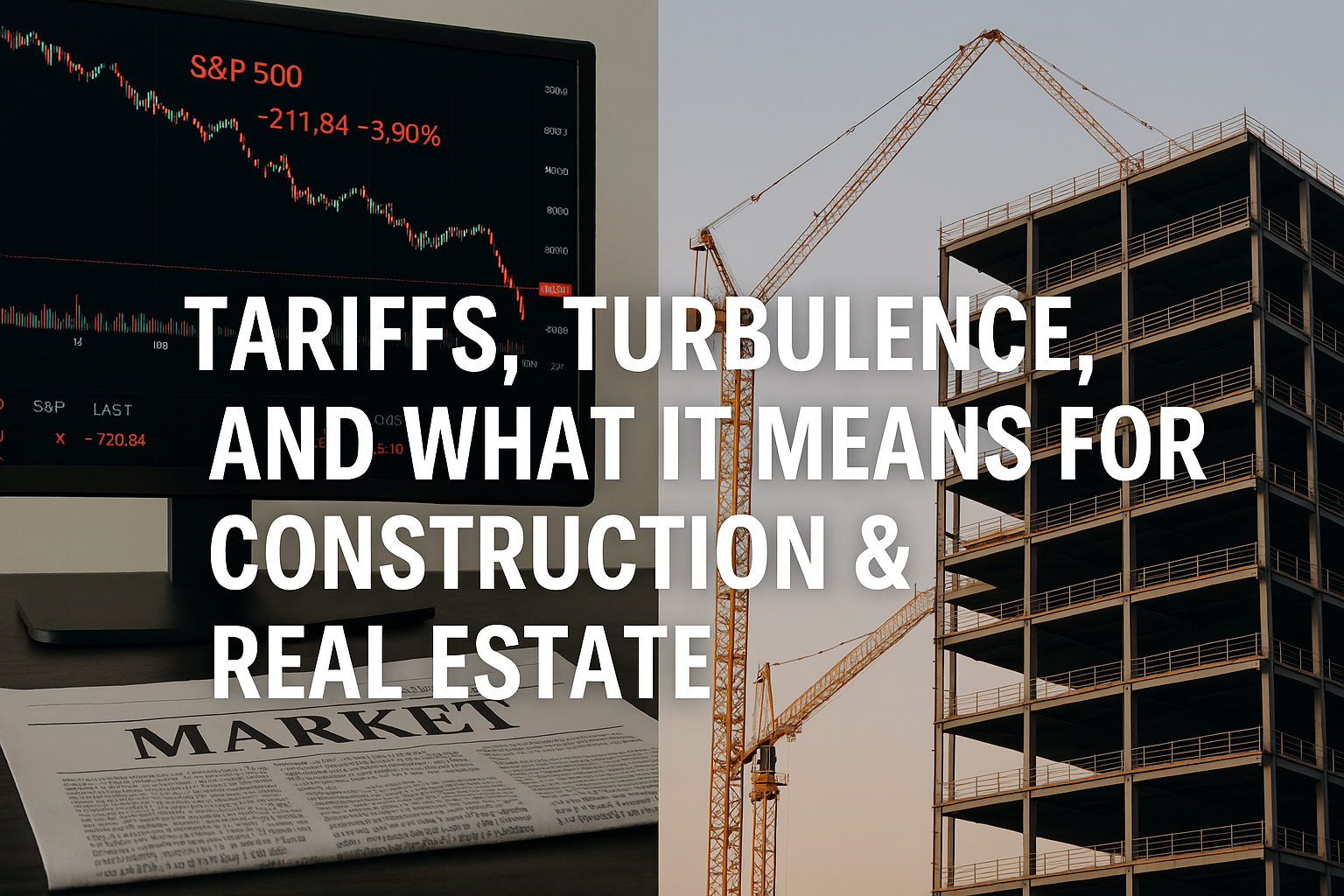
Tariffs, Talent, and Turbulence: What Construction & Real Estate Leaders Need to Know
Tariffs, Turbulence, and What It Means for Construction & Real Estate
On April 2, 2025, President Donald J. Trump declared “Liberation Day”, announcing sweeping tariffs that have sent shockwaves through global markets and industries. The construction and real estate sectors, in particular, are bracing for significant impacts.
At Basilisk Partners, we’ve been in close communication with industry leaders to assess these developments and strategize proactive responses.
Market Reactions
The financial markets responded swiftly and negatively to the tariff announcements. The S&P 500 plummeted approximately 4% shortly after the opening bell, marking its lowest point since September 2022. Major corporations experienced significant stock declines, reflecting widespread investor concern. As the closing bell rang, the US Stock Market had shed $2.85T, it’s worst session in four years. By the time after-hours trading ended, $3.1T of wealth had shifted elsewhere.
Insights from Industry Leaders
In our conversations with construction and real estate professionals over the past week, a clear theme has emerged: uncertainty and the need to adapt—fast.
-
- Barndominium Construction Firm
A Texas-based company specializing in steel-framed barndominiums shared concerns over rapidly rising material costs. While they had anticipated some cost increases this year, the new tariffs hit harder than expected, tightening margins and threatening project timelines. - Industrial Real Estate Developer
An executive from a large industrial real estate firm described the post-tariff environment as “controlled chaos.” Projects already in motion are being re-evaluated line by line, as teams scramble to reassess budgets and determine how these policy shifts will impact long-term financials.
- Barndominium Construction Firm
Projected Impacts on Construction and Real Estate
The newly imposed tariffs are likely to reshape how construction and real estate firms operate—both short and potentially long term:
-
- Rising Construction Costs
Tariffs on imported building materials like steel, aluminum, and electrical components will raise baseline costs. Analysts estimate that tariffs could add thousands of dollars to the cost of new construction across all segments – commercial, residential, and industrial.
In commercial real estate, this increase is particularly disruptive. Projects relying on prefabricated steel structures, HVAC imports, or specialty glass are facing immediate cost reassessments. Developers with fixed bid contracts are now facing margin compression or potential renegotiations. - Project Delays or Cancellations
As material costs rise, developers – especially in commercial real estate—may be forced to pause or cancel projects mid-stream. Speculative builds are particularly vulnerable, as returns become harder to model against escalating input costs. From mixed-use developments to industrial logistics hubs, any project without flexible financial structuring is at risk of delay or termination. - Labor Market Tension and Strategic Hiring
Some companies may respond by freezing hiring or trimming budgets, especially in project management and field operations. However, others are using this time to make calculated moves – strategically hiring for roles in supply chain management, preconstruction analysis, procurement, and finance. These forward-thinking firms recognize that during volatility, your bench strength matters most.
- Rising Construction Costs
We’re seeing a noticeable uptick in demand for mid-level managers who can guide teams through cost reevaluation, vendor realignment, and risk mitigation. Hiring during a downturn isn’t just possible—it can be a competitive advantage if done with intent.
What Should Industry Professionals Be Doing?
If you’re in construction, real estate development, or CRE operations, here’s what we recommend:
-
- Diversify Supply Chains
Now is the time to identify alternative vendors, materials, or local sources that can help mitigate the cost of imported goods. - Double Down on Strategic Talent
Mid-level management is leading this quarter’s hiring wave—and for good reason. These are the people managing chaos and executing under pressure. - Reassess Forecasts
Re-budget current and upcoming projects to reflect tariff-related cost increases. Assume volatility. Flexibility is now a competitive advantage. - Focus on Retention
In periods of uncertainty, your best people might be evaluating their options. Proactively engaging and retaining them could prevent costly turnover.
- Diversify Supply Chains
Times like these require more than reactive thinking. They demand foresight, agility, and precision. At Basilisk Partners, we help construction and real estate leaders navigate uncertainty by identifying, attracting, and retaining the right talent—when it matters most. Let’s talk about how to keep your team aligned and your projects moving through whatever comes next.

